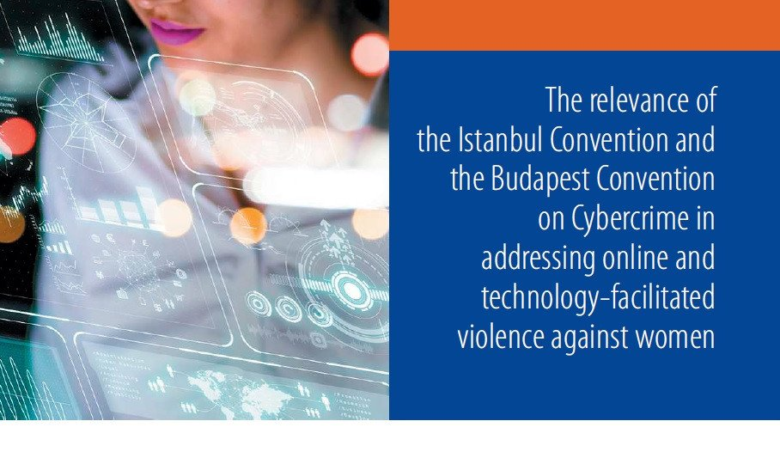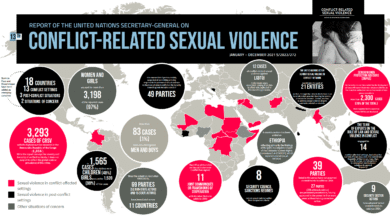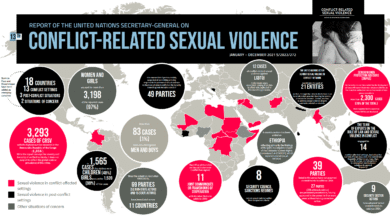Digital Violence Against Women: Understanding Its Impact

Digital violence against women is an alarming crisis that has intensified with the rise of social media and online platforms. Recent reports highlight the devastating impact of online harassment, illustrating how it not only threatens women’s digital safety but also significantly harms women’s mental health. With instances of gender-based violence proliferating in the digital realm, victims often face severe consequences, including anxiety, fear, and paranoia. Efforts to combat this pervasive issue have become increasingly important, as online harassment can lead to tangible harm in the physical world. Addressing the urgent need for effective strategies to create safe digital spaces for women is crucial in reversing the cycle of violence and empowering those affected.
The escalating phenomenon of online abuse directed at women requires urgent attention and action as it encompasses a range of issues often referred to as cyber harassment or digital abuse. Such acts not only undermine women’s safety in the online sphere but can also lead to serious repercussions on their overall well-being, manifesting as anxiety or other mental health challenges. The ramifications of this type of gender-based aggression are profound, as it extends beyond mere digital interactions and can incite real-life violence. Thus, recognizing the complexity of online intimidation against women is vital for creating supportive environments that foster resilience and empowerment. As we navigate this digital landscape, the fight against online bullying and its consequences must remain a focal point of discussion and intervention.
Understanding Digital Violence Against Women
Digital violence against women refers to various forms of online abuse, including harassment, stalking, and cyberbullying. This alarming trend is characterized by the use of technology to exert control and inflict harm on women, manifesting in various degrees of severity. The consequences are profound, extending beyond the digital realm and affecting mental health profoundly. Women who face such violence are often left grappling with anxiety, paranoia, and a debilitating sense of fear. The psychological impact of being targeted can deter women from participating in online discussions and public platforms, leading to a chilling effect on their voices.
In many cases, digital violence is not an isolated incident but a part of a larger framework of gender-based violence. As noted by prominent activists, it can influence women’s involvement in public and political affairs significantly. This systemic issue highlights the need for collective action to combat online harassment and raise awareness around the impact of digital violence. The enduring effects on women’s mental health often result in a feelings of isolation, further exacerbated by societal stigma that discourages victims from speaking out. This necessitates a cultural shift towards recognizing the responsibility of tech companies and the public in creating safer digital spaces.
Impact of Online Harassment on Women’s Mental Health
The impact of online harassment on women’s mental health is both profound and troubling. Victims of digital violence often experience a range of psychological issues such as depression, anxiety, and emotional instability. The constant state of vigilance that women must maintain when engaging online can lead to chronic stress and burnout, making it difficult to navigate both their personal and professional lives. Moreover, the fear of further harassment can dissuade women from sharing their opinions or engaging in important dialogues, impacting their self-esteem and overall quality of life.
Additionally, the psychological ramifications extend to women’s decision-making processes. Some may choose to withdraw from social media entirely or limit their public engagement due to the potential risks involved. This not only affects individual well-being but also diminishes the diversity of voices in public discourse, creating an environment where women’s perspectives are underrepresented. The interconnectedness of mental health and digital safety reveals a urgent need for broader advocacy and policy changes to protect women’s rights and foster a supportive community.
Gender-Based Violence in the Digital Age
Gender-based violence has increasingly found a new avenue in the digital age, evolving in form as technology advances. Digital platforms, while offering opportunities for connection and expression, have also become breeding grounds for abuse, particularly against women. The anonymity and reach provided by the internet can embolden perpetrators, often leading to severe consequences for victims. This violence isn’t just personal; it explodes into societal issues, reinforcing harmful stereotypes and perpetuating systemic gender inequality.
Activists stress that digital violence must be recognized as part of the broader spectrum of gender-based violence. It’s imperative to tackle the root causes, which include misogyny and cultural norms that devalue women. To combat this, initiatives that foster digital literacy and awareness about the implications of online behavior are essential. Creating a culture of respect online is crucial for mitigating the risks associated with digital violence, empowering women to reclaim their space in both digital and physical realms.
Creating Safe Digital Spaces for Women
Creating safe digital spaces for women is essential in combating the rampant issue of digital violence. Activists and organizations have begun to implement strategies that foster safer online environments, such as developing tools to report harassment more effectively and providing resources for mental health support. These initiatives aim to create empowering online communities where women can express themselves freely without the fear of retaliation or abuse. By promoting safety online, we reinforce women’s rights to participate in discussions vital to societal progress.
Moreover, this initiative requires collaboration among various stakeholders, including tech companies, governmental bodies, and civil society. Legislation that penalizes digital violence and supports victims is critical, as is the accountability of digital platforms in monitoring and addressing harmful behavior. By strengthening the frameworks that protect women online, we can make significant strides in reducing online harassment and fostering a culture of respect and support.
Consequences of Online Harassment
The consequences of online harassment extend far beyond immediate hurt; they can alter the course of women’s lives. Victims often face backlash that impacts their employment, personal relationships, and mental health trajectory. Some women have reported feeling isolated and withdrawing from their communities due to fear of further victimization. This creates a cycle of silence around digital violence that must be broken, as the ramifications are vast and include professional setbacks, emotional distress, and in severe cases, suicidal tendencies.
In addition, the legal repercussions of demonstrating online harassment can be inadequate, which leaves many women feeling unprotected and powerless. When legal systems fail to respond effectively to complaints of digital violence, it emboldens attackers and discourages victims from seeking help. As they navigate the fallout, many women find themselves questioning their safety, both online and offline, which has a tangible impact on their overall quality of life. Given these consequences, it is essential to address online harassment as a form of aggression that necessitates urgent and sustained intervention.
The Role of Technology in Facilitating Digital Violence
Technology plays a dual role in the context of digital violence against women. While it can be a tool for empowerment and connection, it also serves as a mechanism for abuse and harassment. With advancements in technology, perpetrators have become more adept at utilizing digital platforms to exert control over victims. These tactics include stalking, dissemination of intimate images without consent, and coordinated harassment campaigns that aim to silence and intimidate women online.
Addressing the role of technology in facilitating digital violence entails a multifaceted approach—advocating for stricter legal measures, urging tech companies to implement robust safety features, and fostering a culture of accountability. As technology evolves, so do the types of harassment faced by women, highlighting the necessity for ongoing dialogue about digital safety and ethical tech use. Empowering women to take control of their digital presence is essential, as is the creation of supportive resources that mitigate risks associated with technology misuse.
Collective Action Against Online Harassment
Collective action is vital in addressing and combating online harassment that targets women. Activists emphasize the importance of community solidarity in creating a collective voice to denounce digital violence. Movements that amplify women’s experiences and demands for justice can foster a supportive network that encourages victims to speak out. By uniting in advocacy, women can demand accountability from tech companies and push for comprehensive legislation that addresses digital violence in all its forms.
The impact of collective pressure can lead to significant changes in policies that govern online behavior. When communities band together, they can challenge the status quo that allows digital violence to persist unchecked. This requires not only the involvement of women but also allies—men and organizations committed to gender equality—who can leverage their influence to promote real change. Together, we can create a safer online environment that respects and uplifts women’s voices, making digital spaces more inclusive and equitable.
Legislation and Policy Recommendations
As discussions around digital violence against women evolve, there is a pressing need for impactful legislation that comprehensively addresses the issue. Activists strongly advocate for laws that recognize digital violence as a standalone offense and stipulate strict penalties for perpetrators. Such legislation would not only serve to protect women but also deter potential offenders by clearly outlining the consequences of their actions. Policymakers must engage in dialogue with women’s rights organizations to develop legal frameworks that are responsive to the changing landscape of digital communication.
Furthermore, policy recommendations should include training for law enforcement and legal professionals on the unique dynamics of online harassment. This ensures a better understanding of the nuances involved in online violence against women, promoting more empathetic and effective responses. Establishing clear reporting mechanisms and support systems for victims will also encourage more women to report incidents of digital violence without the fear of retribution or disbelief. Adequate funding for education and prevention programs can foster a culture that does not tolerate digital violence against women.
The Need for Digital Literacy and Education
Digital literacy and education are critical components in the fight against digital violence. By equipping women and girls with the skills to navigate online spaces safely, we empower them to recognize and respond to potential threats. Educational initiatives can focus on understanding online privacy, recognizing manipulative behaviors, and advocating for one’s rights in digital contexts. When women are educated about their digital rights and online safety tools, they are better positioned to protect themselves and counteract violence.
Additionally, promoting digital literacy in schools and communities can foster a culture of respect and empathy online. Initiatives that include discussions about gender-based violence, online harassment, and mental health can help shape attitudes that reject harmful behavior. As society becomes more digitally inclined, these educational efforts must be prioritized to equip future generations with the knowledge they need to create safe and inclusive digital environments.
Frequently Asked Questions
What is digital violence against women and how does it relate to gender-based violence?
Digital violence against women encompasses various forms of online harassment, threats, and abuse directed at women, often exacerbating existing gender-based violence. This includes actions such as cyberstalking, doxxing, and sharing private information without consent. The repercussions of digital violence can lead to severe psychological impacts, such as anxiety and paranoia, reflecting the broader issues of gender inequality and discrimination faced by women in both online and offline spaces.
How does digital violence impact women’s mental health?
The impact of digital violence against women on mental health is profound. Victims of online harassment often experience heightened levels of anxiety, fear, and depression. This debilitating effect can hinder women’s ability to participate fully in public life, including political and social activities, ultimately stifling their voices and contributions to society.
What are the consequences of online harassment for women?
The consequences of online harassment are far-reaching; they can create a chilling effect that discourages women from expressing themselves freely on digital platforms. This harassment not only diminishes women’s mental health but also influences their physical safety, as it can escalate to real-world violence. Women may even feel forced to abandon their careers or public engagements due to the fear and trauma induced by digital violence.
What strategies can women employ for digital safety against online harassment?
To enhance digital safety for women, several strategies can be implemented. These include using privacy settings on social media, being cautious about the personal information shared online, and utilizing tools that can help shield against harassment, such as blocking or reporting abusive accounts. Furthermore, fostering a supportive community and engaging in ‘pre-bunking’ tactics can prepare women to recognize and counter manipulation narratives prevalent in online spaces.
How can society combat digital violence against women?
Combating digital violence against women requires a collective effort. This includes advocating for stronger legislation to penalize perpetrators of online abuse, raising awareness about the implications of digital violence, and fostering discussions that include the participation of men and allies. Institutions must also prioritize education on digital safety and gender-based violence to cultivate a more respectful and equitable online environment.
| Key Point | Details |
|---|---|
| The relationship between digital violence and real-world consequences | Digital violence against women leads to anxiety, paranoia, and fear, impacting both mental and physical health. It can escalate into real-world violence. |
| Voices from Activists | Activists from Spain and Latin America are collaborating to combat digital violence through collective voice, expecting support from both genders. |
| Pre-bunking and Inoculation Techniques | ‘Meta narratives’ can be identified and countered through ‘pre-bunking’, where individuals learn about manipulation tactics used against women online. |
| Legislative Actions | Countries like Mexico have documented over 700 policies addressing digital violence, yet the prevalence of such violence is still pervasive. |
| The Impact of Technology on Women | New technologies often become tools for gender violence, emphasizing the importance of creating supportive online environments for women. |
Summary
Digital violence against women represents a significant and growing issue that affects women in their personal and public lives across the globe. As highlighted in recent discussions among activists, the impact of this violence extends beyond online interactions and can lead to severe psychological and physical consequences. Through collective efforts and legislative improvements, there is hope for combating this pervasive problem, but it requires unified action and increased awareness within communities. Addressing digital violence against women is not just a women’s issue; it is a societal one that demands everyone’s involvement.




